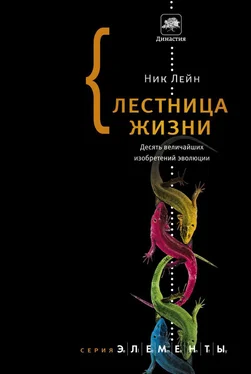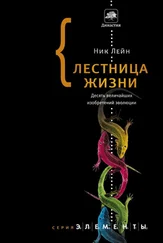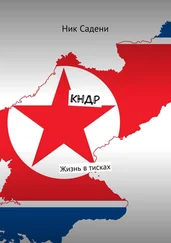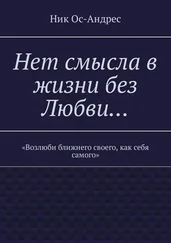Swank, D. M., Vishnudas, V. K., Maughan, D. W. An exceptionally fast actomyosin reaction powers insect flight muscle // Proceedings of the National Academy of Sciences USA 103:17 543-7; 2006.
Wagner, P. J., Kosnik, M. A., Lidgard, S. Abundance distributions imply elevated complexity of post-paleozoic marine ecosystems // Science 314:1289–92; 2006.
Глава 7. Зрение
Addadi, L., Weiner, S. Control and Design Principles in Biological Mineralisation // Angewandte Chemie International Edition 3:153–169; 1992.
Aizenberg, J., et al. Calcitic microlenses as part of the photoreceptor system in brittlestars // Nature 412: 819–822; 2001.
Arendt, D., et al. Ciliary photoreceptors with a vertebrate-type opsin in an invertebrate brain // Science 306: 869–871; 2004.
Deininger, W., Fuhrmann, M., Hegemann, P. Opsin evolution: out of wild green yonder? // Trends in Genetics 16:158–159; 2000.
Gehring, W. J. Historical perspective on the development and evolution of eyes and photoreceptors // International Journal of Developmental Biology 48: 707–717; 2004.
Gehring, W. J. New perspectives on eye development and the evolution of eyes and photoreceptors //Journal of Heredity 96:171–184; 2005.
Nilsson, D. E., Pelger, S. A pessimistic estimate of the time required for an eye to evolve И Proceedings of the Royal Society of London В 256: 53–58;1994.
Panda, S., et al. Illumination of the melanopsin signaling pathway // Science 307: 600–604; 2005.
Piatigorsky, J. Seeing the light: the role of inherited developmental cascades in the origins of vertebrate lenses and their crystallins // Heredity 96: 275–277; 2006.
Shi, Y., Yokoyama, S. Molecular analysis of the evolutionary significance of ultraviolet vision in vertebrates // Proceedings of the National Academy of Sciences USA 100: 8308–8013; 2003.
Van Dover, C. L., et al. A novel eye in «eyeless» shrimp from hydrothermal vents on the Mid-Atlantic Ridge // Nature 337: 458–460; 1989.
White, S. N., et AL. Ambient light emission from hydrothermal vents on the Mid-Atlantic Ridge // Geophysical Research Letters 29: 341–344; 2000.
Глава 8. Теплокровность
Burness, G. P., Diamond, J., Flannery, T. Dinosaurs, dragons, and dwarfs: the evolution of maximal body size // Proceedings of the National Academy of Sciences USA 98:14 518-14523; 2001.
Hayes, J. P., Garland, J. The evolution of endothermy: testing the aerobic capacity model // Evolution 49: 836–847; 1995.
Hulbert, A. J., Else, P. L. Membranes and the setting of energy demand // Journal of Experimental Biology 208:1593–1599; 2005.
Kirkland, J. I., et al. A primitive therizinosauroid dinosaur from the Early Cretaceous of Utah // Nature 435: 84–87; 2005.
Klaassen, M., Nolet, B. A. Stoichiometry of endothermy: shifting the quest from nitrogen to carbon // Ecology Letters 11:1–8; 2008.
Lane, N. Reading the book of death // Nature 448:122–125; 2007.
O’Connor, P. M., Claessens, L. P. A. M. Basic avian pulmonary design and flow-through ventilation in non-avian theropod dinosaurs // Nature 436: 253–256; 2005.
Organ, C. L., et AL. Molecular phylogenetics of Mastodon and Tyrannosaurus rex // Science 320: 499; 2008.
Prum, R. O., Brush, A. H. The evolutionary origin and diversification of feathers // Quarterly Review of Biology 77: 261–295; 2002.
Sawyer, R. H., Knapp, L. W. Avian skin development and the evolutionary origin of feathers // Journal of Experimental Zoology 298B: 57–72; 2003.
Seebacher, F. Dinosaur body temperatures: the occurrence of endothermy and ectothermy // Paleobiology 29:105–122; 2003.
Walter, I., Seebacher, F. Molecular mechanisms underlying the development of endothermy in birds (Gallus gallus): a new role of PGC-1α? // American Journal of Physiology — Regulatory, Integrative and Comparative Physiology 293: R2315 — R2322; 2007.
Глава 9. Сознание
Churchland, P. How do neurons know? // Daedalus Winter 2004; 42–50.
Crick, F., Koch, C. A framework for consciousness // Nature Neuroscience 6:119–126; 2003.
Denton, D. A., et al. The role of primordial emotions in the evolutionary origin of consciousness // Consciousness and Cognition 18 (2): 500–514; 2009.
Edelman, G., Gally, J. A. Degeneracy and complexity in biological systems // Proceedings of the National Academy of Sciences USA 98: 13 763-13/68; 2001.
Edelman, G. Consciousness: the remembered present // Anna is of the New York Academy of Sciences 929:111–122; 2001.
Gil, M., De Marco, R. J., Menzel, R. Learning reward expectations in honeybees // Learning and Memory 14: 49–96; 2007.
Koch, C., Greenfield, S. How does consciousness happen? // Scientific American October 2007; 76–83.
Lane, N. Medical constraints on the quantum mind // Journal of the Royal Society of Medicine 93: 571–575; 2000.
Merker, B. Consciousness without a cerebral cortex: A challenge for neuroscience and medicine // Behavioral and Brain Sciences 30: 63–134; 2007.
Musacchio, J. M. The ineffability of qualia and the word-anchoring problem // Language Sciences 27: 403–435; 2005.
Searle, J. How to study consciousness scientifically // Philosophical Transactions of the Royal Society of London B. 353:1935–1942; 1998.
Singer, W. Consciousness and the binding problem // Annals of the New York Academy of Sciences 929:123–146; 2001.
Глава 10. Смерть
Almeida, A., Almeida, J., Bolanos, J. P., Moncada, S. Different responses of astrocytes and neurons to nitric oxide: the role of glycolytically generated ATP in astrocyte protection // Proceedings of the National Academy of Sciences USA 98:15 294-15299; 2001.
Barja, G. Mitochondrial oxygen consumption and reactive oxygen species production are independently modulated: implications for aging studies // Rejuvenation Research 10: 215–224; 2007.
Bauer et al. Resveratrol improves health and survival of mice on a highcalorie diet // Nature 444: 280–281; 2006.
Bidle, K. D., Falkowski, P. G. Cell death in planktonic, photosynthetic microorganisms // Nature Reviews in Microbiology 2: 643–655; 2004.
Blagosklonny, M. V. An anti-aging drug today: from senescence-promoting genes to anti-aging pill // Drug Discovery Today 12: 218–224; 2007.
Bonawitz, N. D., et al. Reduced TOR signaling extends chronological life span via increased respiration and upregulation of mitochondrial gene expression // Cell Metabolism 5: 265–277; 2007.
Garber, K. A mid-life crisis foraging theory // Nature 26: 371–374; 2008.
Hunter, P. Is eternal youth scientifically plausible? // EMBO Reports 8:18–20; 2007.
Kirkwood, T. Understanding the odd science of aging // Cell 120: 437–447; 2005.
Lane, N. A unifying view of aging and disease: the double-agent theory // Journal of Theoretical Biology 225: 531–540; 2003.
Lane, N. Origins of death // Nature 453: 583–585; 2008.
Tanaka, M., et al. Mitochondrial genotype associated with longevity // Lancet 351:185–186;1998.
Реакции этого типа называются окислительно-восстановительными. Для них характерна передача электрона от донора (в данном случае — водорода) акцептору (в данном случае — кислороду), обладающему гораздо большей потребностью в их присоединении. В итоге образуется термодинамически стабильный конечный продукт (вода). В ходе любой окислительно-восстановительной реакции происходит передача электронов от донора акцептору, и примечательно, что все живое, от бактерий до человека, получает энергию за счет того или иного механизма передачи электронов. Венгерский нобелевский лауреат Альберт Сент-Дьерди высказался так: «Жизнь есть не что иное как электроны, которые ищут себе место для отдыха».
Читать дальше

![Ник Лэйн - Вопрос жизни [Энергия, эволюция и происхождение сложности]](/books/27706/nik-lejn-vopros-zhizni-energiya-evolyuciya-i-proisho-thumb.webp)










